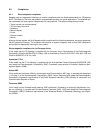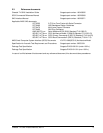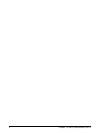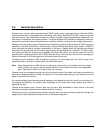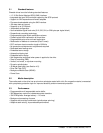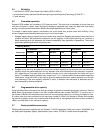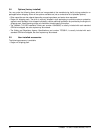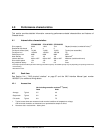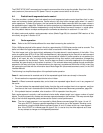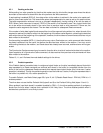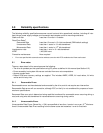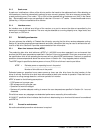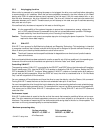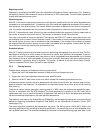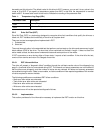
12 Cheetah T10 SAS Product Manual, Rev. A
4.2.2 Format command execution time (minutes)
Execution time measured from receipt of the last byte of the Command Descriptor Block (CDB) to the request
for a Status Byte Transfer to the Initiator (excluding connect/disconnect).
4.2.3 General performance characteristics
4.3 Start/stop time
The drive accepts the commands listed in the SAS Interface Manual less than 3 seconds after DC power has
been applied.
If the drive receives a NOTIFY (ENABLE SPINUP) primitive through either port and has not received a START
STOP UNIT command with the START bit equal to 0, the drive becomes ready for normal operations within 20
seconds (excluding the error recovery procedure).
If the drive receives a START STOP UNIT command with the START bit equal to 0 before receiving a NOTIFY
(ENABLE SPINUP) primitive, the drive waits for a START STOP UNIT command with the START bit equal to 1.
After receiving a START STOP UNIT command with the START bit equal to 1, the drive waits for a NOTIFY
(ENABLE SPINUP) primitive. After receiving a NOTIFY (ENABLE SPINUP) primitive through either port, the
drive becomes ready for normal operations within 20 seconds (excluding the error recovery procedure).
If the drive receives a START STOP UNIT command with the START bit and IMMED bit equal to 1 and does
not receive a NOTIFY (ENABLE SPINUP) primitive within 5 seconds, the drive fails the START STOP UNIT
command.
ST3300555SS ST3146755SS ST373355SS
Maximum (with verify)
145 90 60
Maximum (without verify)
90 45 30
Sustainable disc transfer rate*:
Minimum 55.5 Mbytes/sec
Maximum 93 Mbytes/sec
SAS Interface maximum instantaneous transfer rate 300 Mbytes/sec* per port
(dual port = 600 Mbytes/sec*)
Logical block sizes
Default is 512-byte data blocks
Sector sizes variable to 512, 520, 524 an 528 bytes.
Read/write consecutive sectors on a track Yes
Flaw reallocation performance impact (for flaws reallocated at format time using
the spare sectors per sparing zone reallocation scheme.)
Negligible
Average rotational latency 2.0 msec
*Assumes system ability to support the rates listed and no cable loss.



